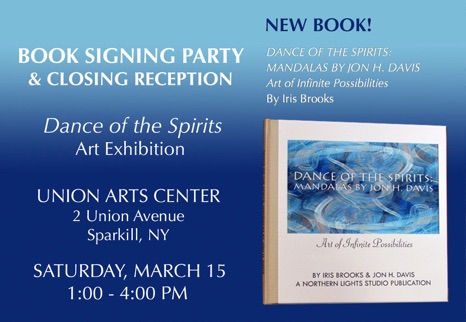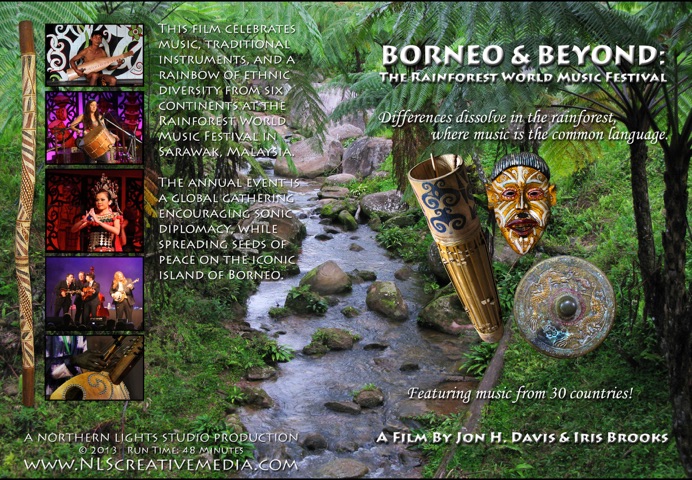EVENTS 2014

FEBRUARY 2014


ARTICLE AND PHOTO MONTAGE:
JANUARY ISSUE OF WORLD & I
"Transforming Prisons Into Museums:
Architectural Adaptation in Iberia"
By Iris Brooks
Photos by Jon H. Davis & Iris Brooks
Domus Artium (Da2)–located in the building which was originally the Provincial Prison and then renovated by architect Horacio Fernandez Del Castillo–incorporates painting, sculpture, photography, video, and installations in a contemporary art museum on two floors with some cells, bars, and deadbolts still intact. The museum opened in 2002 as part of the European Cultural Capital, a celebration of culture, preservation of world heritage, and promotion of cultural tourism throughout Salamanca, a city declared by UNESCO as Heritage of Humanity, in a place known as a university town and city of philosophy. (Excerpted from the article by Iris Brooks published in the World & I ).
SALAMANCA, SPAIN


PORTO, PORTUGAL
The Portuguese Center for Photography (CPF)–in the center of town, near the Tower of Clerics–occupies the former Porto prison, known as Cadeia da Relacao (literally means "old jail.") This neoclassical building was erected in 1767 (built over a 30-year period) and housed prisoners ranging from thieves to disgraced politicians and revolutionaries. Some stayed in squalid communal quarters on the ground level with a court house (de-activated in 1937) above on the middle floor. In the country club style jailhouse occupying the top floor, private cells were only locked at night. Prisoners in this area included Camilo Dastelo Branco, a known poet and writer, who was imprisoned for adultery. He wrote a celebrated novel in cell 12 and a sculpture of him with his lover, titled "Amor de Perdicão" (or Downfall of Love) can still be found outside the art center in this UNESCO World Heritage city.
(Excerpted from the article by Iris Brooks published in the World & I).
JANUARY 2014

FACE TO FACE:
ICE MUSIC FESTIVAL
GEILO, NORWAY
The ninth annual Ice Music Festival was set in a snow amphitheater in the small, mountain village of Geilo. Ethereal sounding compositions/improvisations on other-worldly instruments made of ice, were played by top-notch Scandinavian musicians. Definitely one of the coolest music festivals we have ever documented!
ARTICLE AND PHOTOGRAPHS:
FEBRUARY ISSUE OF GLOBAL TRAVELER
By Iris Brooks
Photos by Jon H. Davis & Iris Brooks

ARTICLE AND PHOTOS:
FEBRUARY ISSUE OF WORLD & I
"The Margaret Mead Film Festival:
Cultural Empowerment Through Media"
By Iris Brooks
Photos by Jon H. Davis
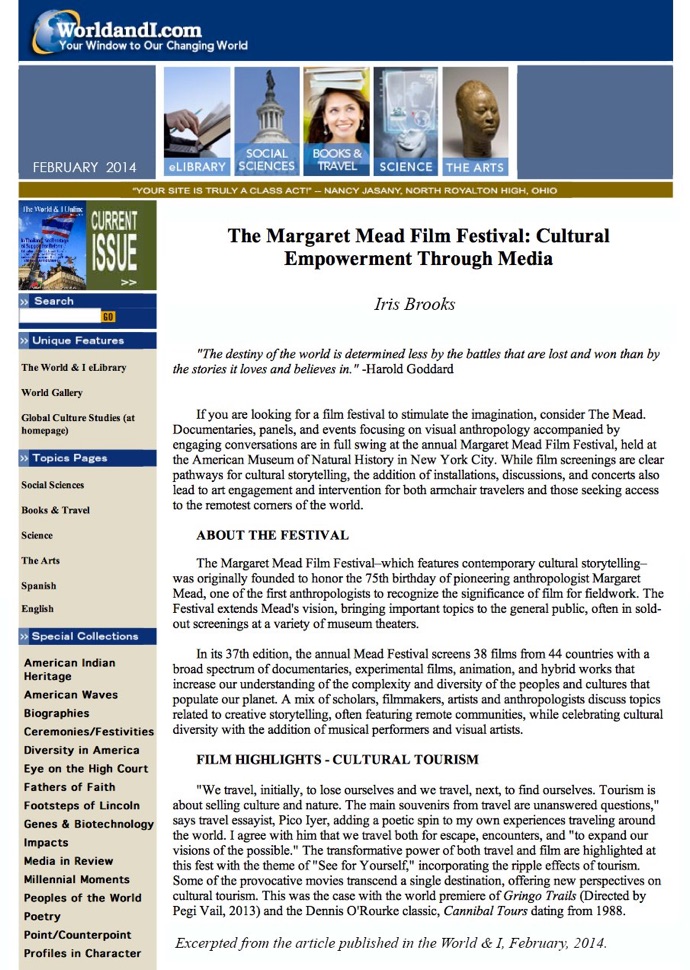


I take away new perspectives on respectful travel when visiting remote communities with a heightened awareness after viewing Cannibal Tours, Gringo Trails, Framing the Other, and more, inspired to become a more responsible travelIer after seeing these films and hearing different points of view. At the Mead Festival, I learn the ancient Tibetan word for "human" is "one who goes on travels." And I hope to continue doing just that, both exploring film as well as taking to the road. My imagination and sense of reflection is stimulated by this global film festival, and I hope to be back for the next Mead fest in the autumn.
- Iris Brooks
REFLECTIONS FROM THE AUTHOR:
ARTICLE:
FEBRUARY ISSUE OF GLOBAL TRAVELER
"Exotic Bliss in Moorea, French Polynesia"
By Iris Brooks

MARCH 2014
ARTICLE AND PHOTO MONTAGE:
MARCH ISSUE OF WORLD & I
"BEYOND TRADITIONAL MOTIFS:
New Sights and Sounds From Iran"
By Iris Brooks
Photos by Jon H. Davis & Iris Brooks

The Asia Society in New York presented a program titled Sound: The Encounter, New Music from Iran and Syria–mixing the highly refined with funk, fervor, jazz inflections, and plaintive Persian melodies–concurrently with an art exhibition, Iran Modern, spanning three decades and drawing upon abstraction, calligraphy, political messages, and folk art. Looking at and listening to Iranian culture in New York was an opportunity to break down stereotypes, reaching beyond traditional motifs, as the music and art delighted the senses, while also serving as a diplomatic bridge. As dynamic musician and dancer, Saeid Shanbehdazeh told me: "Musicians are the real ambassadors of their countries."
-Iris Brooks
GROUP OF NINE MANDALAS 8”X 8” METAL PLANOGRAPHS © JON H. DAVIS
MARCH 8, GALLERY WALK, 1- 4 pm
MARCH 15, CLOSING RECEPTION, 1-4 pm

Learn more about or purchase the new companion book,
DANCE OF THE SPIRITS: MANDALAS BY JON H. DAVIS
Art of Infinite Possibilities By Iris Brooks, © 2014
on the NLS Publications page.
Click on the book image below.
APRIL 2014
FACE TO FACE:
PHOTO MONTAGE AND REFLECTIONS
TRENDING ART HOTELS:
THE THIEF IN NORWAY
Montage and Photos by Jon H. Davis & Iris Brooks
Reflections by Iris Brooks

TRENDING ART HOTELS:
THE THIEF IN NORWAY
Art hotels around the world are re-inventing the way viewers experience art by featuring rotating displays, permanent collections, artist residencies, and art walks. You can view Calder, Cocteau, Picasso, and Warhol alongside emerging artists, all without leaving your hotel.
"Integrating the art and architecture is a way to have more people live with the art, which is more profound than just visiting it."
-Caroline Pages of Caroline Pages Gallery in Lisbon, Portugal
I have enjoyed a contemporary installation, Inside Out, exploring items from the hotel in a context away from their functionality at the Tivoli Hotel in Lisbon, Portugal, a Northwest Coast art exhibit on a museum floor at the Listel Hotel in Vancouver, Canada, and a three-ton hanging sculpture by Frank Stella at the Ritz-Carlton Millennia in Singapore. Other memorable lodgings with a focus on art include the Ferragamo designer hotels in Florence, Italy with eye-catching furniture, new paintings at The Berlin Art Hotel in Germany, and an interesting collection of granary doors, hand-crafted baskets, and carved wooden effigies at the Saxon Hotel in Johannesburg, South Africa.
Among the art hotels I have explored, a recent stay at The Thief in Oslo, Norway was particularly noteworthy. Located on the little island of Tjuvholmen–a trendy arts district, which was once home to a criminal population–The Thief is adjacent to the new Astrup Fearnley Museum (designed by architect Renzo Piano). This waterfront hotel has a relationship with the museum, loaning and displaying some of its works. You may run into a Warhol in the Restaurant Fru K, an innovative animated graphic in the elevator, a video triptych on the mezzanine, or in the lobby, an iconic, large-scale cowboy photograph printed on canvas (The Horse Thief by Richard Prince).
While some guests are off to seek urban wellness at the brand new spa, and others experience the Yoko Ono, Wish Tree (where you can add your dreams) in the museum lobby, the hotel also offers a rotating exhibit on its gallery floor. Innovation is at the core of The Thief in Norway, a country which is home to the world chess champion, the one-of-a-kind Ice Music Festival, and three penguins who have been officially knighted.
-Iris Brooks

Photo © Jon H. Davis
ARTICLE AND PHOTO MONTAGES:
APRIL ISSUE OF WORLD & I
"SONIC GEOGRAPHY IN NORWAY:
The Ice Music Festival"
By Iris Brooks
Photos by Jon H. Davis & Iris Brooks


FROZEN ASSETS:
THE ICE MUSIC FESTIVAL
Some music festivals are communal gatherings acting to bind cultural identity or collective belonging while others predominately focus on pure entertainment. But the annual Ice Music Festival in Norway–where performances feature ethereal-sounding instruments sculpted from ice–is first and foremost, an intimate and extraordinary, multi-sensory experience connecting both performers and the audience with the surrounding environment, in a land where silence is not embarrassing. It is a creative festival embracing winter while integrating aesthetics, music, and nature during the first full moon of the year.
Beyond meditative soundscapes reflecting remoteness and isolation, or quirky, fragile instruments, the Ice Music Festival showcases lovely compositions and improvisations by world-class musicians with a finely-tuned aesthetic and a sense of timelessness. This is an important distinction, since those who have not experienced the fest, may assume the ice instruments are just a novelty item, rather than functional instruments capable of being a conduit for significant music, played at the Ice Music Festival by high-caliber musicians, who are primarily Scandinavian.
-Iris Brooks

ICE HARPIST SIDSEL WALSTAD PHOTO © IRIS BROOKS



A SHORT FILM:
TROJAN WOMEN: A PIECE FOR PEACE
CREATED BY JON H. DAVIS & IRIS BROOKS


Called mesmerizing by the NY Times, Trojan Women is an epic music-theater production with an experimental blend of Greek texts, classical and contemporary design/performance elements, and world music. Directed by Andrei Serban with music by Elizabeth Swados, the play was premiered at La MaMa experimental theater 40 years ago and since then has been re-staged, revived, and toured around the world.
"I believe that theater today is more than entertainment and should be more than movies being transformed into Broadway shows. I believe it can serve a purpose of bringing countries and people of different origins together. It can also heal by giving language to pains that people can't identify."
-Liz Swados
"It's done in ancient Greek and Latin and Nahuatl and Mayan and Navajo and made-up languages. You don't know what they are saying specifically, but you are immediately attached to the magic of sound."
-Liz Swados
ART EXHIBITION:
DANCE OF THE SPIRITS:
MANDALAS BY JON H. DAVIS
Art of Infinite Possibilities
UNION ARTS CENTER
2 Union Avenue, Sparkill, NY


MAY 2014
ARTICLE AND PHOTO MONTAGES:
MAY ISSUE OF WORLD & I
"HOW THE WORLD BECAME SMALLER: Transportation Museums”
By Iris Brooks
Photos & Montage by Jon H. Davis & Iris Brooks


Transportation–the movement of people, goods, and information across geographic distances–has been important throughout history, impacting social, political, economic, and environmental issues and interactions. By linking locations locally, regionally, and globally, transportation facilitates mobility, creates balance (by following surplus and demand), and alters relationships between destinations, making the world smaller, since distances no longer present the same obstacles as in times past.
NATIONAL COACH MUSEUM - LISBON, PORTUGAL
A sense of wonder and awe strikes visitors upon entering the National Coach Museum in Lisbon, Portugal, housed in a neoclassical style building dating back to the late 1700s. It is a place to delve into the history, technique, and artistry of carriages and coaches from the end of the 16th through the19th centuries with an emphasis on European court transportation with predominantly horse-drawn vehicles. Each carriage–some of which are adorned with ornate sculptural elements or colorful paintings depicting mythological figures or pastoral scenes–tells a story. Some were given as gifts, others are associated with royal coronations, or the marking of a ceremonial event.
AUTOMOBILE HISTORY MUSEUM - SALAMANCA, SPAIN
Spanning the history of the automobile, this museum was opened in a reconverted power plant in 2002, the same year Salamanca, Spain was designated as the Cultural Capital of Europe. The museum exhibits over 150 models of mostly vintage cars. It traces the evolution of car design in vivid hues and evolving shapes and sizes with early models such as the 1899 daffodil-colored French De Dion Bouton with sporty wood fenders, nautical-like steering column, and face-to-face seating for passengers as well as the sole automobile declared as National Patrimony in Spain, the historic 1910 black, Spanish Suiza with 20/30 HP and embroidered door panels.
-Iris Brooks
CLICK ON THE COACH TO READ THE FULL ARTICLE
IN THE WORLD & I.
JUNE 2014
FILM NEWS:
BORNEO & BEYOND: The Rainforest World Music Festival Directed and Produced by Jon H. Davis and Iris Brooks
Culture of all kinds across frontiers is presented at the annual WOMEX (World Music Expo), "the most important international professional market of world music of every kind. This international fair brings together professionals from the worlds of folk, roots, ethnic and traditional music and also includes concerts, conferences and documentary films," according to the UNESCO Global Alliance for Cultural Diversity.
The trailer from the Brooks & Davis film, BORNEO & BEYOND: The Rainforest World Music Festival is now included on the WOMEX website in their World Music Films section. This documentary is also highlighted in the June newsletter from IMZ, the International Music + Media Centre in Vienna, Austria.
CLICK ON THE IMAGE ABOVE TO VIEW THE TRAILERS.

FACE-TO-FACE
VERMONT MARBLE EXHIBIT & MUSUEM
52 MAIN STREET
PROCTOR, VERMONT

On the site of the old Vermont Marble Company (once the largest in the world), this mill building from the late 1800s–not far from the solid Marble Bridge on Main Street–now houses a Marble Museum filled with the history, art, and science of this important resource. There are impressive marble carvings of US Presidents created by Renzo Palmerini, an active artist-in-residence (Allen Dwight) creating new works on-site, examples of marble from around the globe, and assorted quirky facts: marble can be found in almost every country in the world as well as every state in the U.S., and calcium carbonate (found in marble) is used today in paper, plastic, paint, and more.
FACE-TO-FACE
ART EXHIBITION - PULSATION
OPENING - JUNE 20
CHAFFEE DOWNTOWN
75 MERCHANTS ROW
RUTLAND, VERMONT

PULSATION
This well-curated and visually balanced show (June 20 - July 18th) features sculpture of Eric David Laxman and Pat Musick drawing on a range of diverse materials from a recycled red barbecue grill (transformed into an industrial heart by Laxman) to lilac-hued hydrocal formed in a fanciful organic shape (by Musick), as well as items from the natural world crafted into strong, conceptual pieces by both artists.
-Iris Brooks


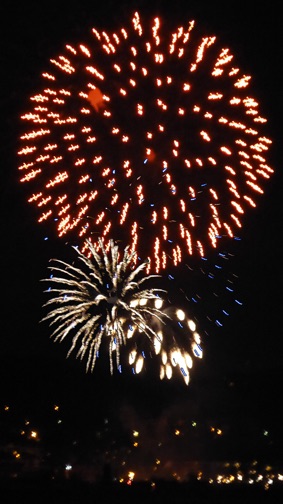
JULY 2014
THE BIG BANG!
A VIEW FROM
NORTHERN LIGHTS STUDIO
Dynamic fireworks displays are found in many lands. Their frightening cracking sounds are said to scare off evil spirits, ghosts, and mountain men in China, promote prosperity, and act as an aid for celebratory festivals such as New Year's Eve around the globe with a particularly spectacular show in Hong Kong. Independence Day holidays including the American Fourth of July in New York (as seen in this photo) or Philadelphia, where fireworks date from 1777, feature dynamic displays. Bastille Day in France, Guy Fawkes Day in the United Kingdom and New Zealand are cause for celebrations along with Diwali in India, and ancient ceremonies in Japan and Thailand.
At NORTHERN LIGHTS STUDIO in Upper Nyack, New York, we had great Hudson River views of colorful fireworks on the 4th of July, as seen in the accompanying photos © Jon H. Davis, 2014.
QUIRKY FACTS ABOUT FIREWORKS:
• Fireworks date back to 200 BC (the Han Dynasty), when chunks of green bamboo thrown into a fire, unexpectedly exploded in China!
• Historically, fireworks were most commonly orange and white, until the Middle Ages when adding different salts produced other colors, blue being the most difficult to create. Multi-hued displays were popular in the 1800s, when Italians added metals to the formula for a more colorful palette.
• The first recorded fireworks in England took place at the wedding celebration of King Henry VII in 1486. A century later Queen Elizabeth I, a fan of fireworks, appointed a Fire Master of England. A subsequent Fire Master was knighted by King James II.
• The largest fireworks display ever recorded (according to the Guinness World Records) took play in 2013 in Dubai with 479,000 fireworks.
• The word for fireworks in Japanese–hanabi–literally means "fire-flower."

FACE-TO-FACE
ADIRONDACK ADVENTURE
A trip through the Adirondack region of New York State allows for time to slow down and reconnect with nature, appreciating a myriad of textures. It's an opportunity for stargazing in an expansive night sky without pollution, to listen to the sound of the paddle slicing through clear lake waters, or to experience an unexpected encounter with a gaggle of geese or a solitary Blue Heron on the canoe dock.
AUGUST 2014

QUIRKY HERON FACTS:
• There are 64 different species of herons found around the world.
• The Great Blue Heron (mostly grayish blue) is the largest heron in North America.
• Herons choose a new mate every year.
• Their feathers become brighter in the mating season.
• Heron plumes were popular on women's hats during the 19th century.
• While they may move slowly on land, Great Blue Herons–with an enormous wing span–fly between 25 and 35 miles per hour.

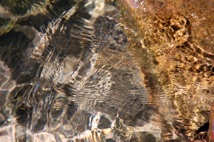
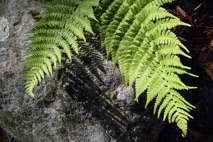
All Adirondack Photographs © Iris Brooks & Jon H. Davis 2014
OCTOBER 2014
ARTICLE AND PHOTO MONTAGES:
SEPTEMBER ISSUE OF WORLD & I
"UNEXPECTED ART IN MAINE:
Mechanical Musical Instruments, Arctic Artifacts, and Garden Art"
By Iris Brooks
Photos by Jon H. Davis & Iris Brooks
CLICK ON THE IMAGE ABOVE TO READ THE FULL ARTICLE.
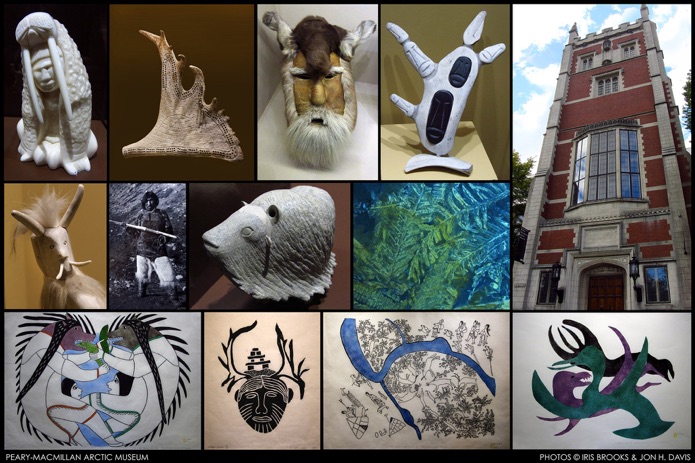

Taking time to contemplate art–whether it is a dreamlike Arctic print, a finely crafted music box,
or an abstract sculpture tucked in alongside a woodland garden path–is a chance to explore something new, while refreshing your being. And Maine is a great place to do just that.
As Thomas Merton wrote:
"Art enables us
to find ourselves
and lose ourselves
at the same time."
THE PEARY-MACMILLAN ARCTIC MUSEUM AT BOWDOIN COLLEGE, BRUNSWICK, MAINE




COASTAL MAINE BOTANICAL GARDENS IN BOOTHBAY
MUSICAL WONDER HOUSE IN WISCASSET, MAINE
SEPTEMBER 2014
DOCUMENTARY FILM
BORNEO & BEYOND:
The Rainforest World Music Festival
By Iris Brooks and Jon H. Davis
NOW AVAILABLE WORLDWIDE AS A VIDEO-ON-DEMAND.
CLICK ON THE CARD BELOW TO WATCH THE TRAILER
OR PURCHASE THE FILM.
ARTICLE AND PHOTO MONTAGES:
OCTOBER ISSUE OF WORLD & I
"HIMALAYAN ART & MEDICINE”
By Iris Brooks
Photos by Jon H. Davis & Iris Brooks

HIMALAYAN ART & MEDICINE
BY IRIS BROOKS
Art often serves to stimulate, refresh, express, entertain, question, and inspire, shifting our perspectives while arousing our aesthetic senses. But art may also be functional, providing a service or acting as an educational device, recording knowledge to be disseminated. This is the case with the healing arts of the Himalayas as illustrated at the Bodies In Balance: The Art of Tibetan Medicine exhibit recently presented in New York City by the Rubin Museum of Art. Now celebrating its tenth anniversary, The Rubin is the only museum in the U.S. dedicated to the Himalayan region and they consistently provide provocative and well-curated shows.
The "Bodies In Balance" exhibit features a rich visual history from the 9th - 21st centuries of Tibetan Medicine, communicating its theory, practice, and fundamental principals through paintings, sculpture, objects, artifacts, medical instruments, and manuscripts. The core themes of this show encompass not only Tibetan art and the science of healing, but its relationship to Buddhism, as well as its artistic expression in a variety of media as well as craft. The transmission of ancient healing practices and ever-evolving, fluid medical knowledge–ranging from diagnosis of disease to its treatment–is presented through art works such as a set of 17th century Tibetan medical scrolls rather than text books. In this show, art from Tibet, Mongolia, and Nepal (from over 20 institutions and private lenders) illuminates and intrigues viewers interested in different approaches to healthy living.


PHOTOS © IRIS BROOKS
READ THE FULL ARTICLE IN THE WORLD & I MAGAZINE.
ART IN NATURE
MANITOGA
Garrison, New York
Photographs & Mandala by Jon H. Davis
MANITOGA, "meaning place of great spirit," is the Russel Wright Design Center and Woodland Garden in Garrison, New York. Mary and Russel Wright's imagination melded art and nature, blurring divisions between indoors and out. Today, this quiet preserve of uncommon beauty–more than the industrial designers' historic home and studio–promotes cultural tourism while it continues to inspire artists anew, such as Jon H. Davis, who created his MANITOGA MANDALA after a recent visit.
- Iris Brooks

MANITOGA MANDALA © JON H. DAVIS

WOODLAND PATH © JON H. DAVIS


STREAM AT MANITOGA © JON H. DAVIS
NOVEMBER 2014
ARTICLE AND PHOTO MONTAGES:
NOVEMBER ISSUE OF WORLD & I
"INTERNATIONAL FOOD MUSEUMS”
By Iris Brooks
Photos by Jon H. Davis

INTERNATIONAL FOOD MUSEUMS
Cuisine from afar offers clues about culture and is a window through which we can connect with history, heritage, and people from other lands. Immersing yourself in fragrant aromas, tasty treats, and the folklore of food are some of the joys of exploring food museums around the world. As Thanksgiving approaches and feasts are planned, consider these quirky food museums with fare from three continents including the Canadian Potato Museum on Prince Edward Island, Flagstaff House Museum of Tea Ware in Hong Kong, and the Cheese Museum in Azeitao, Portugal. The following montage was made from images taken by Jon H. Davis at the impressive Museum of Bread Culture in Ulm, Germany, where we learned bread has been used to ward off evil spirits, for sun worship, and in fertility rites while also viewing art by Brueghel, Rembrandt, Picasso, and Dali.
-Iris Brooks
FILM PREMIERE AND INSTALLATION
PULL ME UP
A Film By Iris Brooks, Jon H. Davis, and Eric David Laxman
In Conjunction with an Art Exhibit by Eric David Laxman
at the BEACON ARTIST UNION
BAU Gallery in Beacon, New York
November 8 - December 7, 2014




"I spin on the circle of wave upon wave." - Pablo Neruda
ARTICLE AND PHOTOS
DECEMBER ISSUE OF ISLANDS MAGAZINE
"LISTEN: COLD PLAYS"
By Iris Brooks
Photos by Jon H. Davis and Iris Brooks
COLD PLAYS
On a frozen Norwegian lake amidst the Holmevatnet islands, ice is harvested, transported through snowy forests, and carved into otherworldly instruments for the Ice Music Festival in nearby Geilo.
ICE CELLO
The gloved cellist performs hauntingly beautiful music, embracing winter in a visceral experience with his ice cello, painstakingly carved in sub-zero temperature. Modeled after a 17th-century cello, this 3-year-old instrument emerges from a freezer, singing in the wind during ethereal improvisations, even playing Bach, before its Jimi Hendrix style demise, in a dramatically shocking onstage, literally "smashing" finale.
-Iris Brooks
Note: The article in Islands magazine highlights a trio of instruments: the Ice Cello, Ice Harp, and Ice Marimba.


NEW FILM
ICE MUSIC
A Film By Iris Brooks and Jon H. Davis
A NORTHERN LIGHTS STUDIO PRODUCTION
for Islands Magazine
December 2014
A companion piece to the article and photos

The founder of the Ice Music Festival has researched the sound of ice, traveling to Antarctica, the North Pole, Sweden, and Siberia. But he is partial to the lake ice around the Holmevatnet Islands in his native Norway, for great sounding ice instruments: cellos, horns, harps, and percussion performed at the annual winter festival in Geilo, Norway. Yes, they really work.
Just watch and listen.
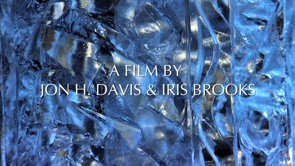
"Wherever you look, there is only one color,
the color of ice."
CLICK > ABOVE TO PLAY
WATCH THE ICE MUSIC FILM HERE
"Frightening away
evil spirits is a
function of bells
around the globe.
The resonant and reverberant nature
of the bell imbues
it with mystical powers, attracting worshippers and paving the way for both ritual cleansing and spiritual communication."



“Taking a bell from
a town is akin to
removing its soul,
but this is what
happened in France,
where bells were re-
cycled for minting
coins in the 1800s.”
BELLS FROM:
China, Okinawa,
Tibet, Mexico,
Benin, India, Spain,
Canary Islands,
Japan, USA,
Senegal, Bhutan, Portugal.
ARTICLE AND PHOTO MONTAGES:
DECEMBER ISSUE OF WORLD & I
"BELL TRADITIONS:
RITUAL OBJECTS AND SIGNALING DEVICES”
By Iris Brooks
Photos by Jon H. Davis & Iris Brooks
DECEMBER 2014
